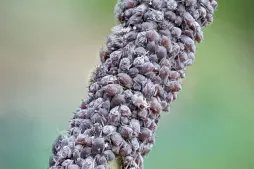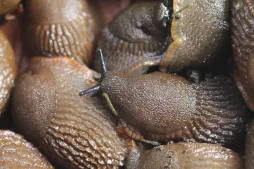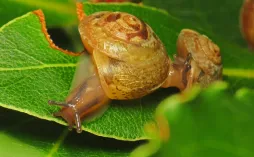Bletilla striata, a seasonal orchid
While phalaenopsis hybrid and the jewel orchid thrive in the warmth of your living room, the hyacinth orchid, in Latin Bletilla striata, prefers the great outdoors. Native to China, Tibet and Japan, it can withstand temperatures as low as -20°.
How to recognize the hyacinth orchid Bletilla striata?
Bletilla striata is a terrestrial orchid. Its root system consists of rhizomes and pseudobulbs. At the peak of its growth cycle, the plant reaches a height of 80 centimetres.
Bletilla striata's light-green leaves herald the return of spring. They emerge from the bulbs in groups of three or four. Oblong and lanceolate, the leaf blades can measure up to 30 centimetres.
A few weeks later, in May, the flowers appear. Depending on the variety, they may be white, pink or violet. The corolla has four petals and a lighter labellum. The flowering stem supports six to ten flowers, arranged in a spike.
Flowering lasts an average of one month. Once the flowers have faded, the deciduous foliage persists until mid-autumn.
Shortly before the onset of winter, the deciduous foliage dies back. On the surface, the plant seems to have disappeared, but its rhizomes remain. When the weather's fine, they give rise to new shoots.
Like all members of the Orchidaceae family, the Bletilla striata hyacinth orchid is non-toxic. Its inflorescence and leaves cause no discomfort when handled or ingested. You can plant them without fear of poisoning your pets or wildlife.
Our maintenance tips
The secret to looking after your Hyacinth orchid? Keep it cool in summer and warm in winter.
Watering
Bletilla striata likes regular, but not excessive, watering. Its roots must not be drowned. Use non-calcareous water, such as rainwater or filtered water at room temperature.
Between waterings, let the soil dry on the surface (by about two centimetres).
Remember to remove any stagnant water from the saucer or planter.
Spray
If the air in your home is dry, spray the leaves of your plant with non-calcareous water at room temperature.
Repotting
In spring, transfer your Bletilla striata to a larger pot, so that it can continue to grow.
Obtain a perforated pot large enough for the sprouts to grow. Place clay balls or gravel at the bottom to help excess water run off.
Prepare a mixture of equal parts ordinary soil (universal potting soil or garden soil), leaf compost or heather soil and sand, for drainage. Pour a first layer and place your Hyacinth orchid in the center of the pot. Fill in with substrate to the height of the root ball.
Tamp gently to eliminate air bubbles and water to help the plant take root.
Fertilization
You can stimulate the development of your plant during its growth phase, in spring and summer, with fertilizer.
Add orchid fertilizer to watering water. You can alternate between a growth fertilizer and a bloom fertilizer.
Plantation
Once the last spring frosts have passed, you can plant.
Bletilla striata are rhizomatous plants. They spread their root system lengthwise. Choose a pot with holes large enough for shoots to grow.
Line the bottom with a drainage layer, such as gravel or small pebbles. Then add a mixture of ordinary potting soil (or garden soil), sand and a rich substrate (heather soil or leaf compost). Plant your pseudobulbs five centimetres deep and cover with potting soil.
Press down to remove air bubbles and water for the first time to encourage rooting.
Once the last spring frosts have passed, you can plant.
Prepare a planting hole approximately 30 centimetres deep. Place pebbles or gravel at the bottom to form a drainage layer. Cover with potting soil mixed with perlite or pozzolan.
Plant your pseudobulbs five centimetres from the surface, buds up. You can place three or four in the same hole. Fill with substrate.
Water for the first time to remove air bubbles and help the plant take root.
Cutting
You can take cuttings all year round.
Carefully dig up the plant. Observe its root system and locate the individual plants. Separate them, always keeping a stem with its leaves and roots.
Division can be done by hand. But if the roots are too tangled, you can cut them with a clean, sharp tool.
Prepare a perforated pot lined with a drainage layer, such as gravel or clay balls. Then fill it with potting soil for green plants.
Plant your bulb in the center. Bury it at a depth of twice its size. Pay attention to the direction! The tip should face upwards and the rhizomes downwards.
Diseases / Threats
Information
| Family | Orchids - Orchidaceae |
| Type | Bletilla - Bletilla |
| Species | Hyacinth orchid - Bletilla striata |
| Lifecycle | Perennial |
| Foliage | Deciduous |
| Exposures | |
| Substrat | |
| Planting methods |
Open ground In pots In tubs Planter |
| Categories | |
| Tags |
Flowery Rustic |
| Origin |
East Asia |
| Hardiness (USDA) | 6b |
| Leaf color |
|
| Flower colors |
|
Discover plants from the same family
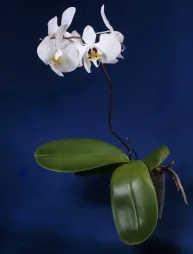
Moon Orchid
Discover
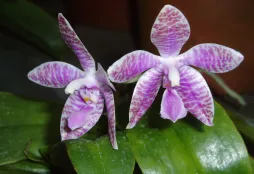
Phalaenopsis lueddemanniana
Discover
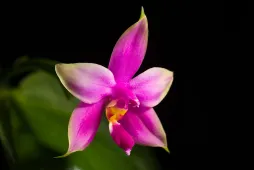
Phalaenopsis violacea
Discover
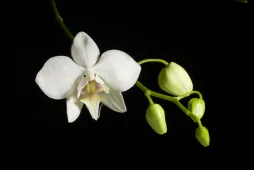
Phalaenopsis Aphrodite
Discover












